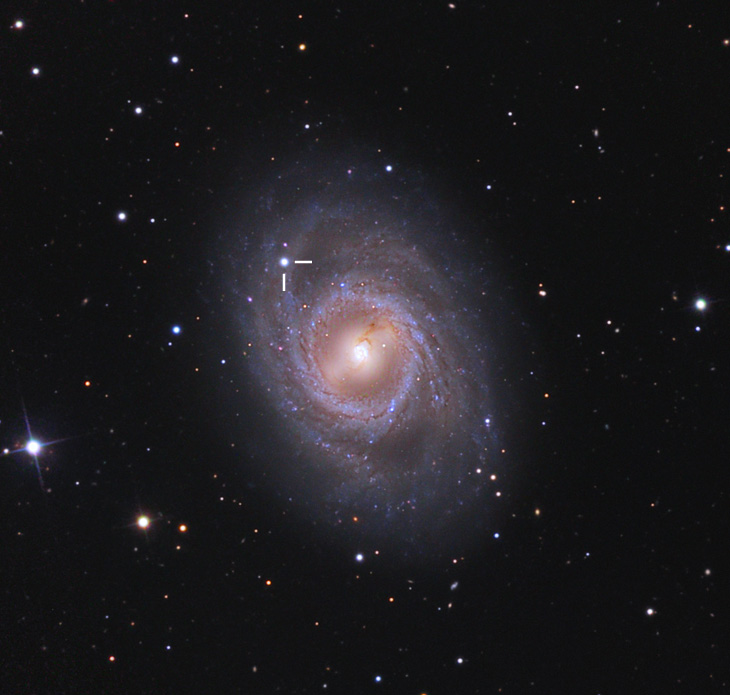
Clic here for 70% size 1793 x 1666 (530 kB)
This new close-up on M95 shows a supernova that was discovered on March 16, 2012 shining at approx. mag 12.
16" cassegrain in corrected secondary focus at f/10
About this Image
Supernovas are relatively rare events in the universe and they fade away quickly within a few weeks, so astronomers have to be especially speedy to spot them in time.
Furthermore, typically most of them are too distant and faint for astronomers to identify the stars that set them off. Fortunately astronomers could identify the progenitor star in M95 from older HST data. That star now has exploded as a supernova shining almost as bright as the whole galaxy for a very short period. Actually all this happened some 35 million years ago, this time it took for the light travelling across the universe to us.
M95 is a barred spiral of type (R'2)SB(r,nr)ab with nearly circular arms and with a nice blue ring of a star forming zone.
The distance to M 95 as part of the Leo I group is approx. 35 million light years.
Find more information about this supernova here.
North is down.
Find the wide field image showing M 95, M 96 and the M 105 group here.
Technical Details
Optics
Mount
ASA DDM-85XL GEM
Camera
SBIG STX16803 at -30C, STX filter wheel
Filters
Baader LRGB
Date
Mar 28, 2012
Location
Wildon/Austria
Sky Conditions
mag 5 sky, seeing 1.5-2.3", temperature 10 C
Exposure
LRGB = 180:60:60:60 minutes (20-minute sub-exposures);
additional frames from 2006 incorporated
Programs used
Autoslew
Sequence
Maxim DL 5
CCDStack
Photoshop CS5
home